Ever wonder how your phone unlocks with your face or how apps know exactly what’s in a photo? That’s the magic of computer vision models – tools that help machines “see” and understand images like we do. Over the years, computer vision has made huge strides, thanks to the release of powerful and efficient models. These breakthroughs have impacted everything from healthcare to self-driving cars. For example, models like AlexNet and ResNet kicked off a revolution in image classification. R-CNN and its successors made object detection smarter, while U-Net changed the game for medical image segmentation.
In this guide, we’ll walk through the different types of computer vision models and what makes each one special – in plain.

Custom Models for Real-World Challenges: AI Superior’s Approach to Computer Vision
AI Superior – a leader in artificial intelligence. Our company can adapt computer vision models – ranging from convolutional neural networks (CNNs) to transformers – for highly specific, real-world applications.
Whether it’s segmenting fat and muscle tissue on MRI scans for an ophthalmology center or deploying a real-time graffiti detection system for municipalities, we ensure each solution is purpose-built, accurate, and scalable. Our road damage detection tool, powered by deep learning, has already improved infrastructure monitoring, while our drone-based debris detection system saved a city over 320 man-hours monthly. Another success story includes an OCR automation solution that cut data entry errors in half, dramatically increasing efficiency.
AI Superior’s approach is always client-focused. We not only build advanced AI systems but also guide our clients through training and seamless integration with their existing workflows. If you’re looking to incorporate the latest advancements in artificial intelligence into your business, we’re here to help. Let AI Superior develop and deploy the computer vision tools your project needs to succeed.
And now about computer vision models. What types are there, and how do they differ? Take a look at each one step by step:

1. YOLO (You Only Look Once)
YOLO is a family of real-time object detection models known for their speed and efficiency. Introduced by Joseph Redmon et al., YOLO processes images in a single pass through a convolutional neural network (CNN), predicting bounding boxes and class probabilities simultaneously. Its lightweight architecture and ability to achieve high frame rates make it ideal for edge devices and real-time applications like video surveillance and autonomous driving. The latest versions, such as YOLOv12, balance speed and accuracy, achieving up to 150 FPS for smaller networks with a mean average precision (mAP) of around 63% on COCO datasets.
Model Characteristics:
- Lightweight architecture optimized for edge devices
- Real-time object detection at up to 150 FPS
- Single-stage detection for faster processing
- Fairly good mAP of 63% on COCO dataset
- Supports object detection, segmentation, and classification
Scope of Use:
- Autonomous vehicles for pedestrian and obstacle detection
- Video surveillance for real-time monitoring
- Drones and robotics for navigation and object tracking
- IoT devices for low-latency applications
- Retail for automated checkout systems

2. VGGNet
VGGNet, developed by the Visual Geometry Group at Oxford, is a convolutional neural network known for its simplicity and depth. Using small 3×3 convolutional filters stacked in deep architectures (up to 19 layers), VGGNet excels in image classification tasks. Its uniform structure allows it to capture intricate patterns, making it a benchmark for transfer learning. However, its high parameter count makes it computationally intensive, limiting its use on resource-constrained devices.
Model Characteristics:
- Deep architecture with up to 19 layers
- Small 3×3 convolutional filters for simplicity
- High parameter count requiring significant computational resources
- Strong performance in image classification
- Widely used for transfer learning
Scope of Use:
- Image classification for large-scale datasets like ImageNet
- Transfer learning for custom vision tasks
- Medical imaging for disease classification
- Academic research for benchmarking
- Content-based image retrieval systems

3. Swin Transformer
The Swin Transformer introduces a hierarchical transformer architecture with shifted windows, enabling efficient modeling of visual data at various scales. Unlike traditional CNNs, it uses self-attention mechanisms within local windows, reducing computational complexity while maintaining high accuracy. It outperforms many CNN-based models in image classification, object detection, and segmentation, making it a versatile choice for modern computer vision tasks.
Model Characteristics:
- Hierarchical transformer with shifted window attention
- Efficient scaling for multiple vision tasks
- High accuracy on ImageNet and COCO benchmarks
- Lower computational complexity compared to standard ViTs
- Supports image classification, detection, and segmentation
Scope of Use:
- Image classification for high-accuracy applications
- Object detection in complex scenes
- Semantic segmentation for urban planning
- Autonomous driving for scene understanding
- Precision agriculture for crop monitoring

4. EfficientNet
EfficientNet, developed by Google, achieves state-of-the-art accuracy with fewer parameters by systematically scaling network depth, width, and resolution using a compound coefficient. Its efficiency makes it suitable for both high-performance servers and resource-constrained devices like mobile phones. Variants like EfficientNet-B0 to B7 offer flexibility for different computational budgets, excelling in image classification and transfer learning tasks.
Model Characteristics:
- Compound scaling of depth, width, and resolution
- High accuracy with fewer parameters
- Variants (B0-B7) for different resource constraints
- Optimized for mobile and embedded devices
- Strong performance in transfer learning
Scope of Use:
- Mobile applications for on-device image classification
- Embedded systems for real-time processing
- Medical imaging for diagnostic tools
- Industrial automation for quality control
- General-purpose image classification tasks

5. Detectron2
Detectron2, developed by Facebook AI Research (FAIR), is a modular and scalable library for object detection and segmentation. It implements state-of-the-art algorithms like Faster R-CNN, Mask R-CNN, and RetinaNet, offering high customizability for research and industrial applications. Its integration with PyTorch ensures flexibility, making it a favorite for tasks requiring precise detection and segmentation, such as autonomous vehicles and medical imaging.
Model Characteristics:
- Modular library supporting multiple detection algorithms
- Implements Faster R-CNN, Mask R-CNN, and RetinaNet
- High customizability for research and production
- Seamless integration with PyTorch
- High accuracy in detection and segmentation
Scope of Use:
- Autonomous vehicles for object detection
- Medical imaging for organ and tumor segmentation
- Robotics for complex object tracking
- Industrial research for custom vision solutions
- Precision agriculture for plant health analysis

6. DINO
DINO, developed by Meta AI, is a self-supervised learning model that achieves robust visual representations without labeled data. By encouraging consistency between augmented views of the same image, DINO learns features that rival supervised models in tasks like image classification and object detection. Its ability to work with unlabeled datasets makes it cost-effective for applications where labeled data is scarce.
Model Characteristics:
- Self-supervised learning for robust representations
- No requirement for labeled datasets
- High performance in image classification and detection
- Effective with Vision Transformers (ViTs)
- Cost-effective for data-scarce environments
Scope of Use:
- Image classification with limited labeled data
- Object detection in research settings
- Medical imaging for rare disease detection
- Environmental monitoring with satellite imagery
- Social media for content analysis

7. CLIP
CLIP (Contrastive Language–Image Pretraining), developed by OpenAI, connects visual and textual data through contrastive learning. It learns to align images with their corresponding text descriptions, enabling zero-shot classification and cross-modal tasks like image captioning. CLIP’s multimodal capabilities make it ideal for applications requiring both vision and language understanding, such as visual search and content moderation.
Model Characteristics:
- Multimodal model integrating vision and language
- Zero-shot classification capabilities
- High performance in cross-modal retrieval
- Trained on large-scale image-text datasets
- Versatile for vision-language tasks
Scope of Use:
- Visual search in e-commerce platforms
- Content moderation on social media
- Image captioning for accessibility tools
- Multimodal chatbots for customer service
- Educational tools for visual learning

8. ResNet
ResNet (Residual Network), developed by Microsoft Research, revolutionized deep learning by introducing residual connections that allow training of very deep networks (up to 152 layers) without suffering from vanishing gradients. By learning residual functions with skip connections, ResNet achieves high accuracy in image classification and serves as a backbone for many computer vision tasks. Its robustness and versatility make it a staple in both research and industry applications.
Model Characteristics:
- Deep architecture with up to 152 layers
- Residual connections to mitigate vanishing gradients
- High accuracy in image classification on ImageNet
- Versatile backbone for detection and segmentation
- Computationally intensive but widely optimized
Scope of Use:
- Image classification for large-scale datasets
- Object detection and segmentation as a backbone
- Medical imaging for diagnostic classification
- Facial recognition systems
- Industrial automation for defect detection
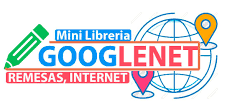
9. Inception (GoogleNet)
Inception, also known as GoogleNet, is a deep convolutional neural network developed by Google, notable for its innovative “Inception” modules that process multiple filter sizes in parallel to capture diverse features. Introduced as the winner of the 2014 ImageNet challenge, it achieves high accuracy in image classification with fewer parameters than contemporaries like VGGNet, making it more computationally efficient. Its architecture balances depth and width, enabling effective feature extraction for complex datasets. Inception’s design has influenced subsequent models and remains a popular choice for transfer learning and as a backbone for detection tasks.
Model Characteristics:
- Inception modules with parallel convolutions
- High accuracy with reduced parameter count
- Efficient computation compared to deeper networks
- Strong performance on ImageNet classification
- Suitable for transfer learning and backbone use
Scope of Use:
- Image classification for large-scale datasets
- Transfer learning for custom vision applications
- Object detection as a feature extraction backbone
- Medical imaging for diagnostic tasks
- Surveillance systems for scene analysis

10. MobileNet
MobileNet, developed by Google, is a family of lightweight convolutional neural networks designed for resource-constrained environments like mobile and embedded devices. It uses depthwise separable convolutions to reduce computational complexity while maintaining reasonable accuracy, making it ideal for on-device applications. Variants like MobileNetV2 and V3 offer improved performance with fewer parameters, achieving up to 75% top-1 accuracy on ImageNet with minimal latency. Its efficiency and adaptability make it a go-to choice for real-time vision tasks on low-power hardware.
Model Characteristics:
- Lightweight architecture with depthwise separable convolutions
- Optimized for mobile and embedded devices
- Variants (V1-V3) with improved efficiency and accuracy
- Up to 75% top-1 accuracy on ImageNet
- Low latency for real-time applications
Scope of Use:
- Mobile apps for on-device image classification
- Embedded systems for IoT and edge computing
- Real-time object detection in wearables
- Augmented reality for feature recognition
- Retail for in-store product identification

11. DeepFace
DeepFace, developed by Facebook AI Research, is a deep learning model designed for facial recognition, achieving near-human accuracy in identifying faces. It employs a nine-layer convolutional neural network trained on a massive dataset of facial images, using a 3D alignment technique to normalize face orientations. DeepFace excels in extracting facial features and comparing them across images, making it highly effective for identity verification. Its robust performance in unconstrained environments, such as varying lighting or angles, has made it a benchmark in face recognition research and applications.
Model Characteristics:
- Nine-layer CNN with 3D face alignment
- High accuracy, approaching human-level performance
- Trained on large-scale facial image datasets
- Robust to variations in lighting and pose
- Optimized for face verification and identification
Scope of Use:
- Security systems for biometric authentication
- Social media for automatic face tagging
- Surveillance for identifying individuals in crowds
- Access control in smart buildings
- Law enforcement for suspect identification

12. FaceNet
FaceNet, developed by Google, is a deep learning model for face recognition that uses a triplet loss function to learn a compact 128-dimensional embedding for each face. By mapping faces into a high-dimensional space where similar faces are closer together, FaceNet achieves state-of-the-art performance in face verification and clustering. Its architecture, based on a deep CNN, is highly efficient and scalable, enabling real-time face recognition on diverse datasets. FaceNet’s embeddings are versatile, supporting applications from mobile authentication to large-scale identity management.
Model Characteristics:
- Uses triplet loss for compact face embeddings
- 128-dimensional feature vectors for faces
- High accuracy in face verification and clustering
- Scalable for large datasets
- Efficient for real-time processing
Scope of Use:
- Mobile device authentication via facial unlock
- Enterprise identity management systems
- Photo organization for clustering faces
- Retail for personalized customer experiences
- Airport security for automated passport control
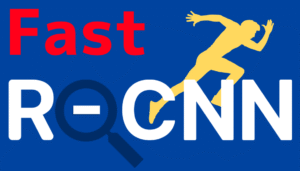
13. Fast R-CNN
Fast R-CNN, developed by Ross Girshick, is an advanced object detection model that improves upon its predecessor, R-CNN, by integrating region proposal and classification into a single convolutional neural network. It uses a Region of Interest (RoI) pooling layer to extract fixed-size feature maps from proposed regions, significantly speeding up training and inference while maintaining high accuracy. Fast R-CNN achieves strong performance on datasets like PASCAL VOC, with a mean average precision (mAP) of around 66%, making it a foundational model for modern object detection frameworks like Detectron2.
Model Characteristics:
- Single-stage CNN with RoI pooling for efficiency
- Improved speed over R-CNN by sharing convolutional features
- High accuracy with mAP of ~66% on PASCAL VOC
- Supports object detection and region-based classification
- Requires external region proposals (e.g., Selective Search)
Scope of Use:
- Object detection in autonomous vehicles
- Surveillance systems for identifying objects in video feeds
- Robotics for environmental perception
- Industrial automation for detecting manufacturing defects
- Academic research for prototyping detection algorithms

14. CheXNet
CheXNet, developed by Stanford University researchers, is a deep learning model based on a 121-layer DenseNet architecture, specifically designed for detecting thoracic diseases from chest X-ray images. Trained on the large-scale ChestX-ray14 dataset, it achieves radiologist-level performance in identifying conditions like pneumonia, with an F1 score of approximately 0.435 for pneumonia detection. CheXNet’s ability to classify multiple pathologies makes it a powerful tool for automated diagnosis in healthcare, particularly in resource-limited settings.
Model Characteristics:
- 121-layer DenseNet architecture
- Trained on ChestX-ray14 dataset for 14 thoracic diseases
- Radiologist-level accuracy for pneumonia detection
- Supports multi-label classification
- Computationally intensive but effective for medical imaging
Scope of Use:
- Automated diagnosis of chest X-rays in hospitals
- Screening for thoracic diseases in remote clinics
- Telemedicine for rapid pathology detection
- Medical research for analyzing large-scale X-ray datasets
- Public health for monitoring disease prevalence

15. RetinaNet (Medical Imaging Adaptation)
RetinaNet, originally developed by Facebook AI Research, is a single-stage object detection model that has been adapted for healthcare applications, particularly in medical imaging tasks like detecting abnormalities in CT scans or MRIs. It uses a Focal Loss function to address class imbalance, enabling precise detection of small or rare lesions. In healthcare, RetinaNet achieves high sensitivity (e.g., ~90% for lesion detection in brain MRIs), making it valuable for tasks requiring accurate localization of anomalies in complex medical images.
Model Characteristics:
- Single-stage detector with Focal Loss for class imbalance
- High sensitivity for small or rare object detection
- Adapted for medical imaging with fine-tuning on datasets like LUNA16
- Supports bounding box localization and classification
- Balances speed and accuracy for clinical use
Scope of Use:
- Detection of tumors or lesions in CT and MRI scans
- Screening for lung nodules in low-dose CT scans
- Automated analysis of retinal images for diabetic retinopathy
- Radiology workflows for prioritizing urgent cases
- Medical research for annotating imaging datasets
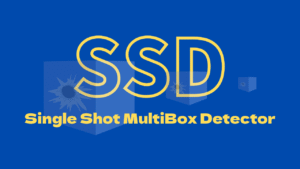
16. SSD (Single Shot MultiBox Detector)
SSD, introduced in 2016 by Wei Liu et al., is a single-stage object detection model designed for speed and efficiency. It eliminates the need for a separate region proposal network by performing detection at multiple scales using feature maps from different convolutional layers. SSD achieves a good balance between accuracy and real-time performance, making it suitable for resource-constrained environments.
Model Characteristics:
- Single-stage architecture for fast detection
- Multi-scale feature maps for detecting objects of various sizes
- Uses default boxes (similar to anchor boxes)
- Lightweight compared to two-stage detectors like Faster R-CNN
- Trained on datasets like COCO and PASCAL VOC
Scope of Use:
- Real-time object detection in embedded systems
- Mobile applications for augmented reality
- Surveillance and security monitoring
- Industrial automation for defect detection
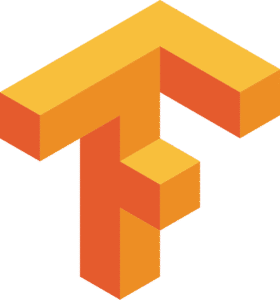
17. U-Net
U-Net, proposed in 2015 by Olaf Ronneberger et al., is a convolutional neural network designed for image segmentation, particularly in biomedical imaging. Its U-shaped architecture features a contracting path for context capture and an expansive path for precise localization, with skip connections to preserve spatial details. U-Net is widely used for pixel-wise segmentation tasks due to its efficiency and accuracy.
Model Characteristics:
- Symmetric encoder-decoder architecture
- Skip connections between contracting and expansive paths
- Lightweight with fewer parameters
- Designed for small datasets with data augmentation
- High performance in medical image segmentation
Scope of Use:
- Medical image segmentation (e.g., MRI, CT scans)
- Satellite imagery for land use mapping
- Autonomous driving for road and lane segmentation
- Industrial applications for surface defect analysis
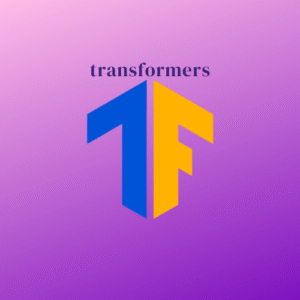
18. ViT (Vision Transformer)
Vision Transformer (ViT), introduced in 2020 by Alexey Dosovitskiy et al., adapts the transformer architecture from natural language processing for image classification. It divides images into patches, treats them as tokens, and processes them through transformer layers. ViT excels in large-scale datasets, surpassing traditional CNNs when pre-trained on massive datasets like ImageNet-21k or JFT-300M.
Model Characteristics:
- Transformer-based architecture with self-attention
- Image patches as input tokens
- Variants: ViT-Base, ViT-Large, ViT-Huge
- Computationally intensive, requiring significant pre-training
- High accuracy on ImageNet with large-scale data
Scope of Use:
- Image classification on large datasets
- Transfer learning for vision tasks
- Multimodal applications (e.g., vision-language models)
- Research in scalable vision architectures

19. Mask R-CNN
Mask R-CNN, introduced in 2017 by Kaiming He et al., extends Faster R-CNN to perform instance segmentation in addition to object detection. It predicts object masks pixel-by-pixel while detecting and classifying objects, making it a powerful tool for tasks requiring precise object boundaries. Its versatility has made it a standard in complex vision tasks.
Model Characteristics:
- Two-stage architecture with Region Proposal Network (RPN)
- Adds mask prediction branch to Faster R-CNN
- Uses RoIAlign for precise feature alignment
- Computationally intensive but highly accurate
- Trained on COCO for detection and segmentation
Scope of Use:
- Instance segmentation for autonomous vehicles
- Human pose estimation and keypoint detection
- Medical imaging for organ segmentation
- Robotics for object manipulation

20. Faster R-CNN
Faster R-CNN, introduced in 2015 by Shaoqing Ren et al., is a two-stage object detection model that significantly improved speed and accuracy over its predecessors (R-CNN, Fast R-CNN). It integrates a Region Proposal Network (RPN) with a detection network, enabling end-to-end training and efficient region proposals. Faster R-CNN laid the groundwork for advanced detection and segmentation models, balancing precision and computational cost.
Model Characteristics:
- Two-stage architecture: RPN for region proposals, followed by classification and bounding box regression
- Uses anchor boxes for diverse object scales and aspect ratios
- Backbone CNN (e.g., ResNet, VGG) for feature extraction
- Region of Interest (RoI) pooling for aligning features
- Trained on datasets like COCO and PASCAL VOC
Scope of Use:
- Object detection in autonomous driving systems
- Surveillance for identifying objects or people
- Retail for product detection and inventory management
- Research and development of advanced detection frameworks
Conclusion
Computer vision models might sound like high-tech stuff (and they are), but they’re actually part of our everyday lives – powering the tools and apps we use without us even noticing. From recognizing your pet in photos to helping doctors read medical scans faster, these models are doing some seriously impressive work behind the scenes.
Whether it’s classifying images, spotting objects in real time, segmenting scenes pixel by pixel, or even understanding images through the lens of language, the variety of models out there means there’s one for almost every task. And the technology is only getting better. Real-time models like YOLO and SSD are built for speed, perfect for things like surveillance or robotics. Meanwhile, Vision Transformers (ViTs) and EfficientNet push the boundaries of performance, and Detectron2 offers a full toolkit for detection and segmentation tasks. There’s also DINO, which explores self-supervised learning – teaching models without labeled data. And OpenAI’s CLIP takes things a step further by connecting images and text, opening the door to even more intelligent systems.
As research keeps pushing forward – with self-supervised learning, transformers, and tools like CLIP – the future of computer vision looks smarter, faster, and more capable than ever. So whether you’re just curious or planning to dive into the field yourself, knowing the basics of these models is a great place to start.
